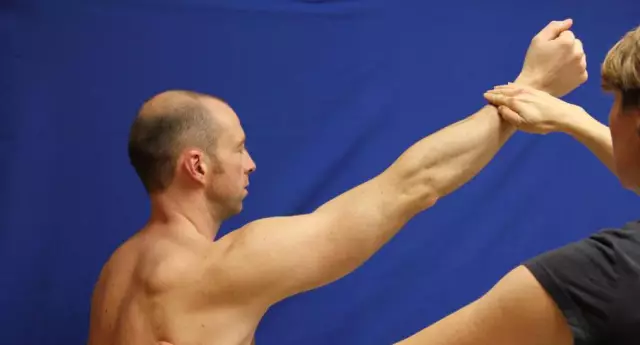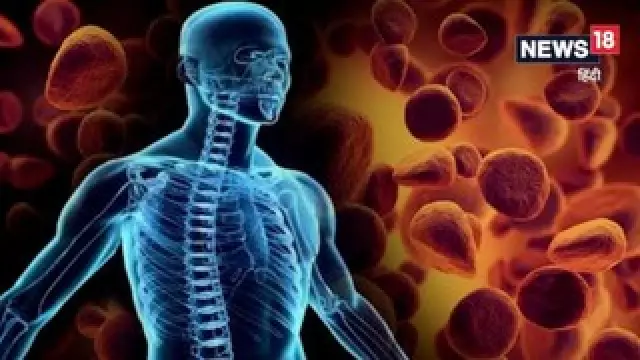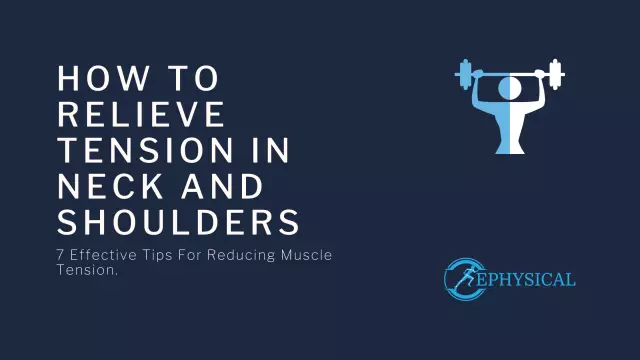- Author Rachel Wainwright [email protected].
- Public 2023-12-15 07:39.
- Last modified 2025-11-02 20:14.
Muscle weakness

Muscle weakness is a common problem with which patients turn to doctors of various specialties. In medicine, the term muscle weakness refers to a decrease in muscle strength assessed objectively. The extent of this lesion can vary. Paralysis is the complete absence of voluntary movement in any muscle group. The weakening of such movements is called paresis.
Causes of muscle weakness
Muscle weakness can accompany completely different diseases. Usually, such a complaint is voiced at an appointment with a neurologist or therapist. Often, patients mean fatigue, decreased sensitivity, difficulty in movement, and even a decrease in overall vitality. Adults are more concerned about muscle weakness in the legs. It is known that heart failure manifests itself in the appearance of shortness of breath and a decrease in the ability to perform physical work, even walking. Some patients misinterpret this condition as muscle weakness. Deforming osteoarthritis of large joints significantly reduces the range of motion in them, which also helps to reduce the tolerated loads and can be perceived as muscle weakness. Even in adults, metabolic disorders are widespread, including type 2 diabetes mellitus. This disease is accompanied by diabetic polyneuropathy, in which peripheral neurons are most often affected, and muscle weakness in the legs appears. All of these causes of muscle weakness generally appear after forty years of age. In a child, muscle weakness often speaks of the pathology of the nervous system. Already in the first minutes of life, the pediatrician assesses the condition of the newborn, including muscle tone. Decreased tone is associated with birth trauma and other causes. So, the causes of muscle weakness are varied. They can be diseases of the nervous tissue (central and peripheral nervous system), endocrine disorders (adrenal insufficiency, thyrotoxicosis, hyperparathyroidism), other conditions (dermatomyositis or polymyositis, muscular dystrophies, mitochondrial myopathies, hysteria, botulism, various poisonings, anemia).in which peripheral neurons are most often affected, and muscle weakness in the legs appears. All of these causes of muscle weakness generally appear after forty years of age. In a child, muscle weakness often speaks of the pathology of the nervous system. Already in the first minutes of life, the pediatrician assesses the condition of the newborn, including muscle tone. Decreased tone is associated with birth trauma and other causes. So, the causes of muscle weakness are varied. They can be diseases of the nervous tissue (central and peripheral nervous system), endocrine disorders (adrenal insufficiency, thyrotoxicosis, hyperparathyroidism), other conditions (dermatomyositis or polymyositis, muscular dystrophies, mitochondrial myopathies, hysteria, botulism, various poisonings, anemia).in which peripheral neurons are most often affected, and muscle weakness in the legs appears. All of these causes of muscle weakness generally appear after forty years of age. In a child, muscle weakness often speaks of the pathology of the nervous system. Already in the first minutes of life, the pediatrician assesses the condition of the newborn, including muscle tone. Decreased tone is associated with birth trauma and other causes. So, the causes of muscle weakness are varied. They can be diseases of the nervous tissue (central and peripheral nervous system), endocrine disorders (adrenal insufficiency, thyrotoxicosis, hyperparathyroidism), other conditions (dermatomyositis or polymyositis, muscular dystrophies, mitochondrial myopathies, hysteria, botulism, various poisonings, anemia).and there is muscle weakness in the legs. All of these causes of muscle weakness generally appear after forty years of age. In a child, muscle weakness often speaks of the pathology of the nervous system. Already in the first minutes of life, the pediatrician assesses the condition of the newborn, including muscle tone. Decreased tone is associated with birth trauma and other causes. So, the causes of muscle weakness are varied. They can be diseases of the nervous tissue (central and peripheral nervous system), endocrine disorders (adrenal insufficiency, thyrotoxicosis, hyperparathyroidism), other conditions (dermatomyositis or polymyositis, muscular dystrophies, mitochondrial myopathies, hysteria, botulism, various poisonings, anemia).and there is muscle weakness in the legs. All of these causes of muscle weakness generally appear after forty years of age. In a child, muscle weakness often speaks of the pathology of the nervous system. Already in the first minutes of life, the pediatrician assesses the condition of the newborn, including muscle tone. Decreased tone is associated with birth trauma and other causes. So, the causes of muscle weakness are varied. They can be diseases of the nervous tissue (central and peripheral nervous system), endocrine disorders (adrenal insufficiency, thyrotoxicosis, hyperparathyroidism), other conditions (dermatomyositis or polymyositis, muscular dystrophies, mitochondrial myopathies, hysteria, botulism, various poisonings, anemia). In a child, muscle weakness often speaks of the pathology of the nervous system. Already in the first minutes of life, the pediatrician assesses the condition of the newborn, including muscle tone. Decreased tone is associated with birth trauma and other causes. So, the causes of muscle weakness are varied. They can be diseases of the nervous tissue (central and peripheral nervous system), endocrine disorders (adrenal insufficiency, thyrotoxicosis, hyperparathyroidism), other conditions (dermatomyositis or polymyositis, muscular dystrophies, mitochondrial myopathies, hysteria, botulism, various poisonings, anemia). In a child, muscle weakness often speaks of the pathology of the nervous system. Already in the first minutes of life, the pediatrician assesses the condition of the newborn, including muscle tone. Decreased tone is associated with birth trauma and other causes. So, the causes of muscle weakness are varied. They can be diseases of the nervous tissue (central and peripheral nervous system), endocrine disorders (adrenal insufficiency, thyrotoxicosis, hyperparathyroidism), other conditions (dermatomyositis or polymyositis, muscular dystrophies, mitochondrial myopathies, hysteria, botulism, various poisonings, anemia). They can be diseases of the nervous tissue (central and peripheral nervous system), endocrine disorders (adrenal insufficiency, thyrotoxicosis, hyperparathyroidism), other conditions (dermatomyositis or polymyositis, muscular dystrophies, mitochondrial myopathies, hysteria, botulism, various poisonings, anemia). They can be diseases of the nervous tissue (central and peripheral nervous system), endocrine disorders (adrenal insufficiency, thyrotoxicosis, hyperparathyroidism), other conditions (dermatomyositis or polymyositis, muscular dystrophies, mitochondrial myopathies, hysteria, botulism, various poisonings, anemia).
Diagnosis of the disease

To find out the cause of muscle weakness, a complete examination of the patient is performed. The doctor talks with the patient: he finds out when the symptoms of muscle weakness first appeared, what affects the manifestations of the disease, in which muscle groups the lesion is localized. In addition, previous illnesses, heredity for neurological diseases and concomitant symptoms are important for diagnosis. Further, a general objective examination of the patient and muscle examination are carried out. At the stage of muscle assessment, the volume of muscle tissue, the symmetry of its location, and tissue turgor are determined. Assessment of tendon reflexes is mandatory. The severity of the reflex is assessed on a scale that has six gradations (no reflexes, decreased reflexes, normal, increased, transient clonus, stable clonus). It must be taken into accountthat in a healthy person, superficial reflexes (for example, abdominal) may be absent, and the Babinsky reflex is the norm in newborns. Muscle strength is assessed using a special scale. The absence of muscle contractions corresponds to zero, and the total muscle strength corresponds to five points. Points from one to four are used to assess different degrees of decrease in muscle strength. With damage to the central nervous system, weakness manifests itself in the limb opposite to the lesion in the brain. So, if a stroke occurred in the left hemisphere, paresis and paralysis develop in the right limbs. In the arms, the extensors suffer more than the flexors. In the lower limbs, the opposite is usually the case. With damage to the central nervous system (brain and spinal cord), weakness is accompanied by an increase in muscle tone,revitalization of deep tendon reflexes, the appearance of pathological reflexes (Hoffman, Babinsky). With damage to the peripheral nervous system, weakness is limited to damage to the zone of innervation of a particular nerve; muscle tone is always low; deep reflexes are weakened or absent. Sometimes, there may be rapid twitching of the muscle bundles (fasciations). To clarify the diagnosis, some functional tests can be carried out: the patient is asked to make a particular movement. To clarify the diagnosis, some functional tests can be carried out: the patient is asked to make a particular movement. To clarify the diagnosis, some functional tests can be carried out: the patient is asked to make a particular movement.
Treating muscle weakness
After the diagnosis is made, the doctor chooses the treatment of muscle weakness according to current guidelines. If the pathology of the nervous system is the cause of muscle weakness, a neuropathologist conducts therapy. Physical therapy, massage, physiotherapy, symptomatic therapy, thrombolytics, neuroprotectors, vitamins and other drugs can be used. In a child, muscle weakness is identified and treated by a pediatric neurologist and pediatrician.
YouTube video related to the article:
The information is generalized and provided for informational purposes only. At the first sign of illness, see your doctor. Self-medication is hazardous to health!






